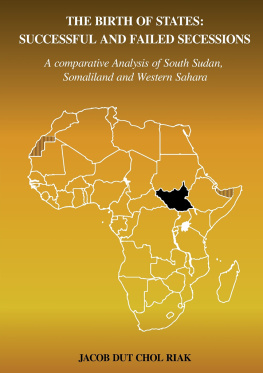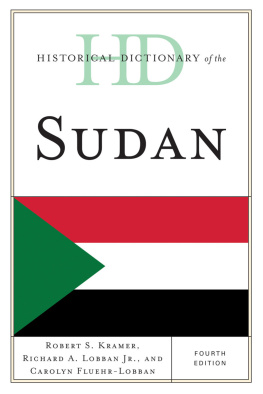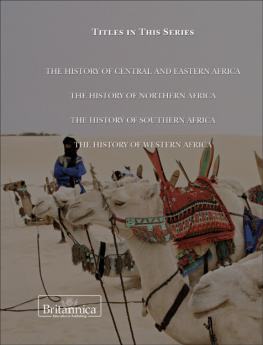First published in 1974 by Methuen & Co Ltd
This edition first published in 2017
by Routledge
2 Park Square, Milton Park, Abingdon, Oxon OX14 4RN
and by Routledge
711 Third Avenue, New York, NY 10017
Routledge is an imprint of the Taylor & Francis Group, an informa business
1974 R. S. OFahey and J. L. Spaulding
All rights reserved. No part of this book may be reprinted or reproduced or utilised in any form or by any electronic, mechanical, or other means, now known or hereafter invented, including photocopying and recording, or in any information storage or retrieval system, without permission in writing from the publishers.
Trademark notice: Product or corporate names may be trademarks or registered trademarks, and are used only for identification and explanation without intent to infringe.
British Library Cataloguing in Publication Data
A catalogue record for this book is available from the British Library
ISBN: 978-1-138-20168-2 (Set)
ISBN: 978-1-315-43940-2 (Set) (ebk)
ISBN: 978-1-138-21153-7 (Volume 2) (hbk)
ISBN: 978-1-138-21220-6 (Volume 2) (pbk)
ISBN: 978-1-315-45113-8 (Volume 2) (ebk)
Publishers Note
The publisher has gone to great lengths to ensure the quality of this reprint but points out that some imperfections in the original copies may be apparent.
Disclaimer
The publisher has made every effort to trace copyright holders and would welcome correspondence from those they have been unable to trace.
First published 1974
by Methuen & Co Ltd
1974 R. S. OFahey and J. L. Spaulding
Printed in Great Britain by
Butler & Tanner Ltd
Frome and London
ISBN 0 416 77450 4 hardback
ISBN 0 416 77460 1 paperback
This title is available in both hardback and paperback editions. The paperback edition is sold subject to the condition that it shall not, by way of trade or otherwise, be lent, re-sold, hired out , or otherwise circulated without the publishers prior consent in any form of binding or cover other than that in which it is published and without a similar condition including this condition being imposed on the subsequent purchaser.
Distributed in the U.S.A. by
HARPER & ROW PUBLISHERS, INC.
BARNES & NOBLE IMPORT DIVISION
The term, bild al-sdn (the land of the blacks), was used by the medieval Arab geographers to describe the lands that stretched from the Senegal River to the Red Sea coast, below the Sahara but above the rain-forests, which were effectively beyond their view. Modern historians of Africa have continued this usage in their discussions of the Sudanic belt, which they have divided into three regions, western, central and eastern. The eastern Sudanic region may be regarded as falling roughly within the present-day borders of the Democratic Republic of the Sudan. This book is thus concerned with the history of the eastern Sudanic region, or the northern and western provinces, but not the southern, of the present Sudan Republic, the Sudan of the title referring to the modern country of that name.
The northern and western provinces of the Sudan were, from the sixteenth until the nineteenth century, when the country was progressively conquered by Muammad Al Pasha, Viceroy of Egypt, and his successors, dominated by two states, the Funj kingdom of Sinnr and the Keira sultanate of Dr Fr (Darfur). Sinnr emerged at the beginning of the sixteenth century and ruled the Gezira and the Nile valley until it was destroyed in 1820 by the armies of Muammad Al. The Keira sultanate first appears in historical records a century later and survived until 1874, when it was conquered by al-Zubayr Pasha. The sultanate was later briefly revived by Al Dnr (1898-1916) before its incorporation into the Anglo-Egyptian Sudan.
The history of the two states has been relatively neglected by comparison with the better-known states of the western bild al-sdn and indeed with other periods of the Sudans history. Yet under their rule emerged many of the social and religious institutions, and much of the local administrative structure, of the modern Sudan.
This study is very much a preliminary account, because although notable work has been done on particular topics within the period, much fundamental research remains to be done, particularly by archaeologists and linguists, on such topics as the remoter origins of the states. It is based upon research for our doctoral dissertations (Spaulding has written ) and we are only too keenly aware of the speculative nature of some of our conclusions, of the many lacunae and of our relative neglect of the later and better documented periods, that is, Sinnr in the last fifty years of its existence and Dr Fr on the eve of the conquest by al-Zubayr. We both hope, in the future, to produce more substantial studies of the states.
As far as possible we have ignored the colloquial Sudanese Arabic forms and have used the transliteration adopted by the Encyclopedia of Islam , but with the omission of the subscript ligatures and the substitution of j for dj and q for . For the Fur language, a modified form of the phonetic system devised by A. C. Beaton in his grammar of the language has been used.
In the spelling of place names it is impossible to be consistent and we have sometimes written the conventional anglicized form, or the arabicized form, or the form, often very inaccurate, that appears on the 1:250,000 Sudan Ordnance Survey maps.
Our debt to previous scholars can be seen from the bibliography. We wish to thank the Herbert H. Lehman Foundation for support for research in the northern Sudan in 1969 and 1970, and the Central Research Fund, University of London, and the Research Committee, University of Khartoum, for making possible research in Dr Fr in 1969 and 1970. Our gratitude is also due to the Department of History, University of Bergen, whose hospitality enabled us to complete the final draft. We have profited greatly from discussions with and guidance from Professor Ysuf Fadl asan and Dr Muammad Ibrhm Ab Salm, who, as chairman of the Sudan Anthropology Board, gave us permission to carry out our fieldwork. We are grateful to Professors P. L. Shinnie and R. H. Pierce and the Rev. Dr A. J. Arkell for reading parts of the original draft; the errors and opinions that remain are of course ours. We owe an especial debt to our doctoral supervisors, Professor P. M. Holt and Dr Marcia Wright. Above all, we are deeply grateful to our long-suffering wives, Margaret and Karen.






